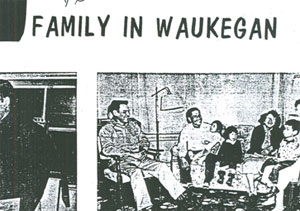The Act was passed in 1856. He encouraged Congress to accept and pass the Removal Act which gave the President allowance to grant land to the Indian Tribes that agreed to give up their homelands the biggest tribes affected were the Cherokee Creek Choctaw Chickasaw and.
Https Www Ncuih Org Action Document Download Document Id 120
This enabled the government to designate as Indian Territory land in the trans-Mississippi West.

Indian relocation act. It created a process through which land in the new territory would be exchanged for tribal land in the East and provided funds for the transportation of History at your fingertips. Public Housing was supplied at first at a no charge to the Relocated and aid in finding a job was promised. On March 28 1830 Congress passed the Indian Removal Act beginning the forced relocation of thousands of Native Americans in what became known as the Trail of Tears.
It is not connected to the. The following year the Meskwaki purchased land in Tama County Iowa. This document is a law enacted by the Iowa General Assembly permitting American Indians to buy land in Iowa.
Congress aimed at decreasing federal control of American Indian affairs and increasing Indian self-government and responsibility. The Relocation Act of 1956 created a voluntary jobs training program whereby Indians on reservations could apply for training be sent to vocational classes and then sent to one of nine urban industrial centers. The Act also known as Public Law 959 or the Adult Vocational Training Program is an extension of termination policy and intends to stimulate urban relocation and assimilation of Natives into the general population.
The law authorized the president to negotiate with southern Native American tribes for their removal to federal territory west of the Mississippi River in exchange for white settlement of their ancestral lands. The Relocation Program did provide some Indians better jobs at the price of being cut off from tribal roots. In the case of the Indian Relocation Act however termination was executed as an expression of cultural genocide rather than mass murder.
The Indian Relocation Act of 1956 was the impetus for the relocation of the large number of Native Americans now living in urban areas. Indian Relocation Act passes launching the urban relocation process The Act also known as Public Law 959 or the Adult Vocational Training Program is. The Meskwaki were the first American Indian tribe to purchase land.
Government during the 19th century. Government policy all through the 1700s and 1800s had been designed to make Indians into yeomen farmers The lawmakers who wrote these policies were forgetting that the first European settlers would have starved without the benevolent help of native farmers. Indian Reorganization Act also called WheelerHoward Act June 18 1934 measure enacted by the US.
Government is decreasing funds to. A few tribes went peacefully but many resisted the relocation policy. The Indian Removal Act was signed into law by President Andrew Jackson on May 28 1830 authorizing the president to grant lands west of the Mississippi in exchange for Indian lands within existing state borders.
Though the act didnt force people to. At a time when the US. The Indian Relocation Act of 1956 has been critiqued as a continuation of the Indian termination policy first enacted by the US.
In 1830 he signed the Indian Removal Act which gave the federal government the power to exchange Native-held land in the cotton kingdom east of the Mississippi for land to. Indian Removal Act of 1830 Andrew Jackson ended up being the biggest supporter and enforcer of the Indian Removal Act. The Indian Relocation Act of 1956 Public Law 929 was a federal law designed to encourage reservations Indians to leave their reservations and move to American cities.
Indian Relocation Act passes launching the urban relocation process. United States Congress passed the Indian Removal Act 1830. The Indian Removal Act was signed into law on May 28 1830 by United States President Andrew Jackson.


